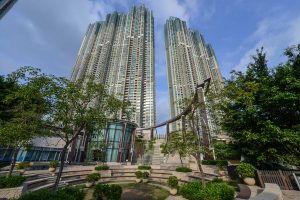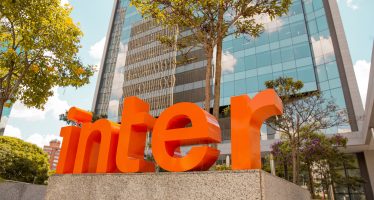Right On Track: MTR Rail Empire Weathers the Pandemic in Style with Innovative Business Model
As public transport operators around the world battle sharp declines in patronage and revenues during the pandemic, MTR Corporation’s diversified “Rail plus Property” (R+P) business model is paying dividends.
A long-term vision has enabled the company to maintain its solid financial base and fulfil its mission to keep cities moving.
MTR is a global leader in urban rail transport with operations extending from its home base in Hong Kong to major cities in mainland China, Europe and Australia. The company takes pride in its track record for providing safe, reliable and efficient railway operations. It delivers 99.9 percent of passenger journeys on-time in Hong Kong, and has built a reputation for quality customer service.
-

- MTR’s railway network is the backbone for public transport in Hong Kong, serving about 4.3 million passenger journeys a day in 2021.
-

- Built above a railway depot, LOHAS Park is a major MTR Rail plus Property development project that will ultimately be home to about 58,000 people.
-

- Railway fans and passengers enter Sung Wong Toi Station in Hong Kong on 27 June 2021 to experience MTR’s full Tuen Ma Line service for the first time.
In Hong Kong, MTR’s railway is the backbone of the city’s public transport network, connecting all 18 districts and serving millions of passengers every day.
The densely populated city has a transport-orientated pattern of development. New railway lines open corridors for growth, in some cases supporting the development of purpose-built “new towns” and regeneration of older urban areas. MTR plays a central role in building and operating the lines — as well as rail-related property.
With end-to-end railway experience and expertise — from planning and design through to operations and maintenance — MTR has been delivering major railway infrastructure projects in international hubs for 40 years. They meet world-class design and engineering standards, and include Hong Kong’s High Speed Rail, Australia’s Sydney Metro, and Beijing Metro Line 4, the first PPP (public-private partnership) urban railway project in China.
With the its R+P model MTR builds new lines, and plans and creates fully integrated commercial and residential communities above (or adjacent to) stations along the railway alignment. The Hong Kong government grants the company land rights, for which MTR pays a premium based on the existing value of the land before railway construction.
The opening of a new rail line enhances the value of these property developments, bringing value-capture benefits to MTR. Newly occupied residential and commercial properties bring people to the area and stimulate patronage. There is a significant benefit to the city, too, with the increased supply of much-needed housing units.
Profits from the sale of residential properties above MTR’s new lines can be leveraged to finance future projects, and reinvest in the existing network to maintain performance standards and customer experience.
The model has proved a winner for the company, which opened its first line in 1979 and has been listed on the Stock Exchange of Hong Kong since 2000. R+P has contributed to the city’s growth and development. A safe, reliable and efficient transport service with seamless connections to homes, offices and community facilities is prized by local residents.
In early 2020, MTR — like its transport industry peers around the world — found itself in the midst of an emerging crisis. Passengers cut back on journeys as social distancing measures took hold, cross-boundary train services and high speed rail to mainland China were halted, and tourist numbers dropped.
In the first two months, MTR’s Hong Kong patronage fell by 34 percent year-on-year. Steeper declines were to follow in some overseas rail operations as cities such as London, Melbourne, and Sydney were placed under lockdown. With less movement through the railway network, there were adverse impacts on station shops and shopping malls that MTR manages along the alignments.
Rail forms the backbone of the Hong Kong public transport network, and it was essential that services be safely maintained. This put MTR at the forefront of city’s pandemic defence. Extensive health and hygiene measures were implemented: extra cleaning, disinfection and ventilation for stations, trains, managed properties and work locations.
Customer-facing staff were required to wear masks and check their temperatures before reporting for duty. New technologies were introduced to enhance hygiene standards, including disinfection robots as well as contactless lift-button sensors. Train service has been maintained throughout the Covid crisis — including normal peak-hour frequency.
To help its stakeholders weather the storm, MTR offered passenger fare rebates and reductions, rental concessions to station and shopping mall tenants, and safeguarded jobs. It also maintained the dividend payments to shareholders at the same level as 2019.
With the negative impacts of the pandemic on its fare and non-fare revenues, the company tightened cost-control measures, including a recruitment freeze: staff accounts for 50 percent of operating costs. There were cuts in discretionary spending on marketing and consultancy, and cashflows were conserved by postponing non-essential capital expenditure.
A new corporate strategy was approved by the MTR board in 2020 to keep cities moving. There was a renewed commitment to innovation and the introduction of new technologies to ensure long-term sustainability. To create shared values with the communities the company serves, a strong ESG regime focused on cutting greenhouse gas emissions and promoting social inclusion, advancement and opportunities.
MTR has long embraced ESG in financing, too, issuing its first $600m green bond in 2016. In 2020, the company issued the largest single-tranche green bond for corporates in Asia-Pacific. Its $1.2bn bond in 2020 won Hong Kong’s Best Green Bond award and the company was named Best Issuer for Sustainable Finance in Hong Kong in The Asset Triple A Country Awards.
With the R+P model supporting long-term financial sustainability, MTR is moving to a brighter future. It plans to invest HK$100bn ($12.8bn) in the coming decade on new railway lines and extensions. An existing railway depot site will be transformed into a residential development, providing 20,000 apartments with rough 50:50 split between private and public housing.
This year, the Hong Kong rail network was expanded with the opening of the full Tuen Ma Line, a strategic connection for multiple existing lines. The company aims to open its fourth cross-harbour railway link next year, extending its East Rail Line which runs through the New Territories and Kowloon across to Hong Kong Island.
You may have an interest in also reading…
Fortman Cline: Are Boutique Investment Banks Here to Stay?
The financial crisis of 2007 spawned a proliferation of boutique investment banks as larger institutions started laying-off staff and eliminating
Inter Seguros: We Need to Talk about Insurance, Brazil
A silent revolution is helping thousands of Brazilian families to plan and take care of the things that matter most
Blue Lagoon: An Otherworldly Experience
Originally founded to unlock the extraordinary benefits of geothermal seawater, Blue Lagoon integrates science, sustainability, nature, and design — creating


















































































